New tooling and realistic sound highlight these HO scale General Motors Electro-Motive Division F7 locomotives from Walthers. Part of the value-priced WalthersMainline series, the models feature accurately detailed body shells and are available with optional dual-mode sound decoders that operate on Digital Command Control (DCC) and direct-current (DC) layouts.
I reviewed a SoundTraxx decoder-equipped version from the first production run. According to the Walthers website, the second production run will have ESU Sound decoders. See the “Facts & features” box at the end of the review.
The prototype. With 2,316 A units and 1,483 B units built between 1948 and 1952, the F7 was the most numerous of EMD’s F unit diesel-electric locomotives. Although the F7 had the same 1,500 hp rating of an EMD F3, the F7’s improved traction motors boosted its tonnage rating by 30 percent over its predecessor.
The Chicago, Burlington & Quincy received its first F7s in 1950. These were single F7A units numbered 163-166. That same year EMD delivered three F7 A-B-A sets to the road, numbered 167 to 169. Each unit in these sets carried the same road number followed by a letter. For example, locomotive no. 167 consisted of 167A, 167B, and 167C.
The F units toiled away for nearly two decades, hauling freight on the Q. Starting in 1969, the road traded in its F7s to EMD toward the purchase of new SD45s. In 1970, the Burlington, along with the Northern Pacific; Great Northern; and Spokane, Portland & Seattle, merged into the Burlington Northern RR. The only CB&Q F7s to make it into the BN were nos. 168A and 168C, but these units were also traded in just five months after the merger.The model. Our review samples model Burlington Route nos. 167-A and 167-B. Walthers also sells 167-C as an individual F7A.
The WalthersMainline locomotives match the dimensions of prototype drawings in F Units: The Diesels That Did It, by Jeff Wilson (Kalmbach Publishing Co., 2000). Correct for its Burlington prototype, the HO diesels depict so-called Phase I F7. Used by railfans, the term “phase” refers to external changes that occurred during a locomotive’s production run. Spotting features of a Phase I EMD F7 include horizontal-slit Farr air-intake grills, horizontal louvers along the sides of the body (A unit), a square rear-door window, and a 36″ diameter dynamic brake fan.
The HO F7’s plastic body shell has well-defined door and rivet seams and rooftop fan grills. Inside the cab is a one-piece interior with two seats. Crew figures aren’t included.
Like other WalthersMainline locomotives, the F7 is more modestly detailed than a roadname-specific WalthersProto model. Separate detail parts on the WalthersMainline F7 include factory-installed handrails along the cab and side doors and two single-chime air horns on the roof. The Blomberg truck sides include separate brake cylinders.
The model is smoothly painted in the Burlington’s light gray freight livery. There’s sharp color separation between the red and black stripes.
All lettering is clearly printed and matches prototype photos, including the scale 1″ 167-a on the F7A and 167-b on the B unit. Printed EMD builder’s plates are also correctly positioned next to the cab steps. The painted windshield wipers on the clear cab window glazing of the F7A are so well done that I almost mistook the wipers for separate parts.
Mechanism. The plastic body shell is press-fit and easy to remove by carefully spreading its sides to disengage the locking tabs. The flywheel-equipped can motor rests in the center of a die-cast metal chassis. Driveshafts transfer power to the truck-mounted gearboxes.
The SoundTraxx decoder is mounted above the motor with a fully enclosed, vertically mounted round speaker behind it. On the A unit, the headlight and signal light are illuminated by two light-emitting diodes (LEDs).
Performance. The model’s 3.2 ounce tractive effort is equivalent to 45 HO scale freight cars on straight and level track. The single unit also had enough pulling power to haul 12 HO freight cars up a 3 percent grade without slipping or stalling.
As you can see in the performance charts above, the locomotive accelerated smoothly during both DC and DCC speed tests. The top speeds are within a few scale mph of gear ratios available on the prototype.
The helical gears used in the Walthers mechanism provide exceptionally smooth low speed performance without any noticeable gear noise to get in the way of the sound system. In DCC, the decoder can be set for 128 speed steps for finer control.
DCC sound. The SoundTraxx decoder in the F7 features the same realistic sound reproduction of the firm’s Tsunami or Econami decoders. User-triggered effects include long and short horn blasts, the bell, headlight, and Gyralight. The latter is correctly located above the door-mounted headlight.
The decoder doesn’t include coupler crash, dynamic brake fan, or button-controlled braking effects. It also doesn’t support as many configuration variables (CVs) as the Tsunami or Econami decoders, but most of my favorite features were still there.
In addition to master volume control, I could adjust the levels of the horn, bell, and diesel engine. Both the EMD 567 diesel and the single chime air horn sounded like prototype recordings I’ve heard.
I was able to add acceleration and deceleration momentum. I also easily advance-consisted the A and B unit together. The units were speed matched out of the box.
To further fine tune performance, the decoder supports custom or 16 preset speed tables.
The decoder also supports function mapping and manual notching. By changing CVs 38 and 41 to a value of 64, I programmed this feature on buttons F4 and F7. Then I could change the engine RPM sound independently of the locomotive speed.
Out of the box the headlight shone constantly. To follow Rule 17 a headlight needs to be dimmable. I easily programmed this feature by changing CV 49 to 129 and CV43 to 16. After those values were programmed, I could dim the headlight by pressing F9. More programming tips can be found in the SoundTraxx Tsunami manual, under “Manuals for discontinued products,” at www.SoundTraxx.com. The site also includes supported CV lists for WalthersMainline locomotives under Manuals/Documents for Factory-Installed Decoders.
DC sound. Sounds and lights are automatic when the locomotive is run with a DC power pack. The engine sounds ramped up or down according to the throttle setting. At speeds under 25 scale mph, a bell sounded. Using an MRC Tech 6 provides access to more functions and some DC programming options.
Whether out of the box or as the starting point for a superdetailing project, the WalthersMainline F7 makes it easy to add an iconic transition-era diesel to an HO scale roster.
Price: DCC sound: A-B set, $369.98; A unit, $199.98.
DC, no sound: A-B set, $249.98; A unit, $129.98
Manufacturer
Wm. K. Walthers Inc.
5601 W. Florist Ave.
Milwaukee, WI 53218
www.walthers.com
Era: 1950 to 1969 (as decorated)
Road names: Chicago, Burlington & Quincy; Alaska RR; Atchison, Topeka & Santa Fe; Canadian National; Milwaukee Road; Northern Pacific; Pennsylvania RR; Southern Ry.; Southern Pacific; VIA Rail; and Wabash.
DCC versions with SoundTraxx decoders: ATSF, Burlington, CN, PRR, Southern, SP.
DCC versions with ESU Sound decoders: ARR, Milwaukee, NP, VIA, Wabash.
Features
• All-wheel drive and electrical pickup
• Die-cast metal chassis
• Dual-mode sound decoder (DCC version)
• Five-pole skew-wound motor with dual brass flywheels
• Light-emitting diode (LED) headlight and Mars light, as appropriate
• Nine-pin DCC socket (DC version)
• Proto-Max metal knuckle couplers, at correct height
• RP-25 contour metal wheels, in gauge
• Weight: 1 pound, .4 ounce (A unit);
• 1 pound, 1.5 ounces (B unit)





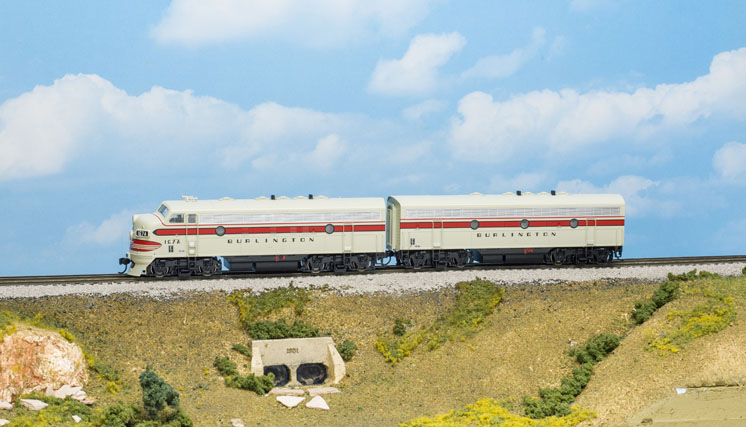
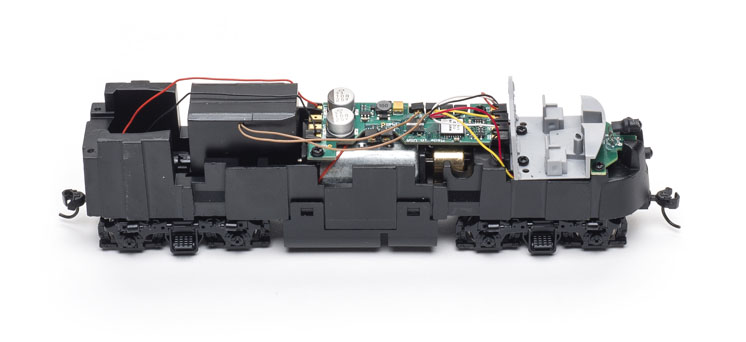
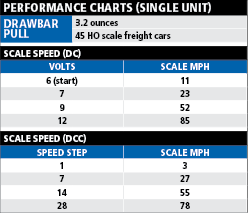

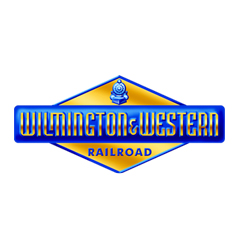
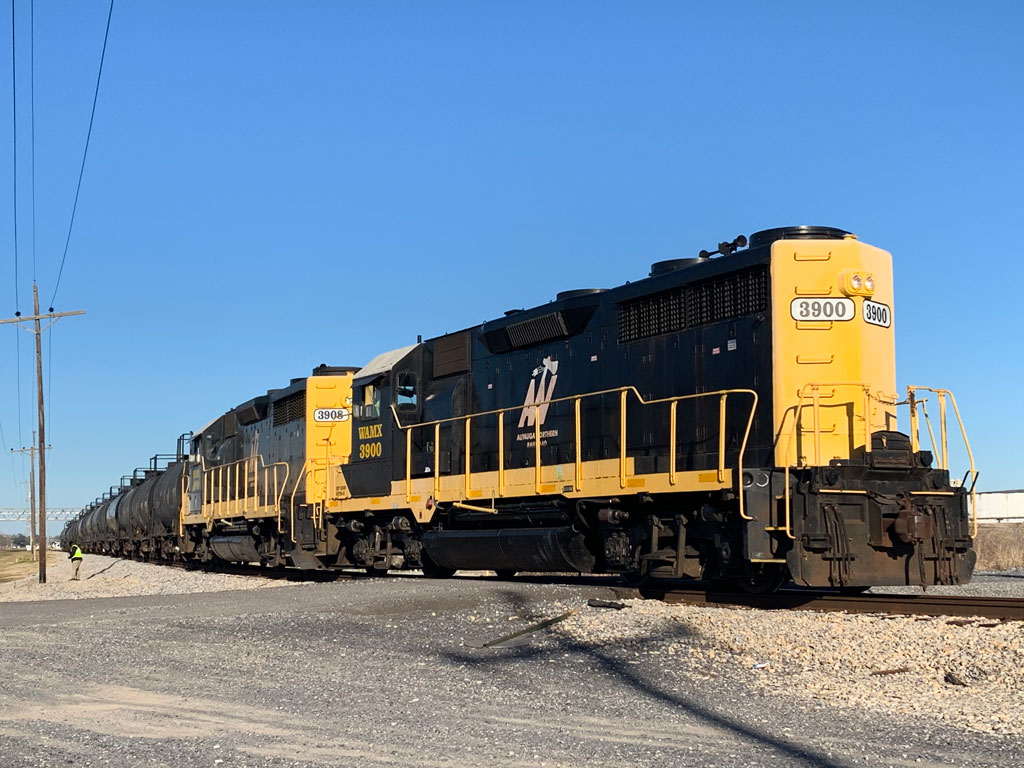

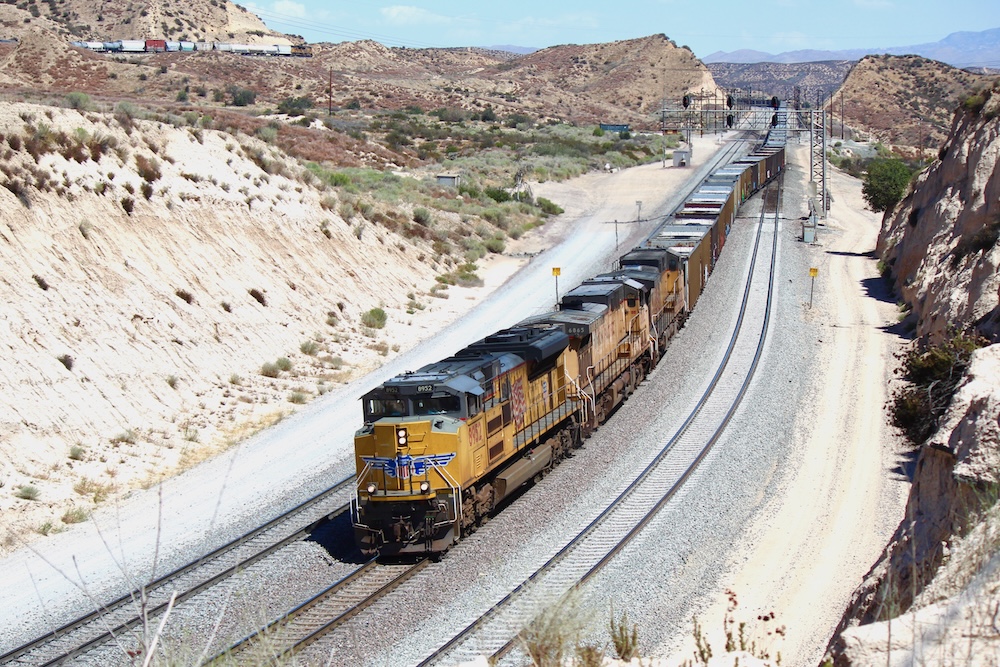




Although I am a DC operator at home, the model railroad club I go to in Livingston, MT is DCC and I needed something that could pull a decent size train up the grades (two and a half percent?) I was extremely pleased with the performance (DC) as the locomotives ran exceptionally smooth and we ably to pull 30 cars up the two and a half percent grade on my layout without breaking a sweat. Could probably add at least 6 to 8 more. The prime mover sound was not overly loud as some of the other DCC locomotives that I have. Can’t wait to get it on the rails at the club.
https://www.youtube.com/watch?v=PfAcZ9106hU&feature=youtu.be